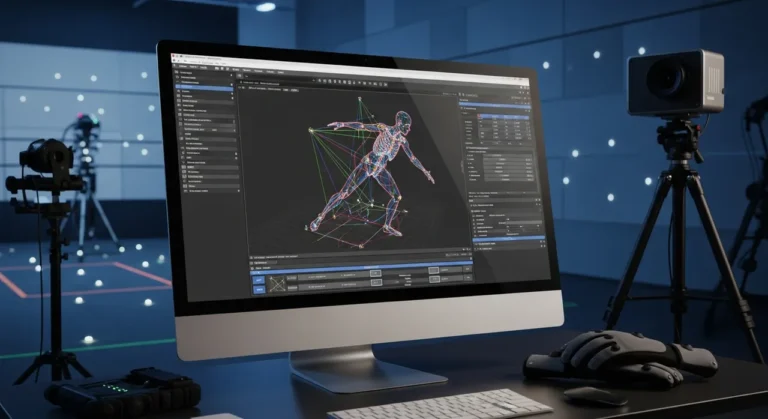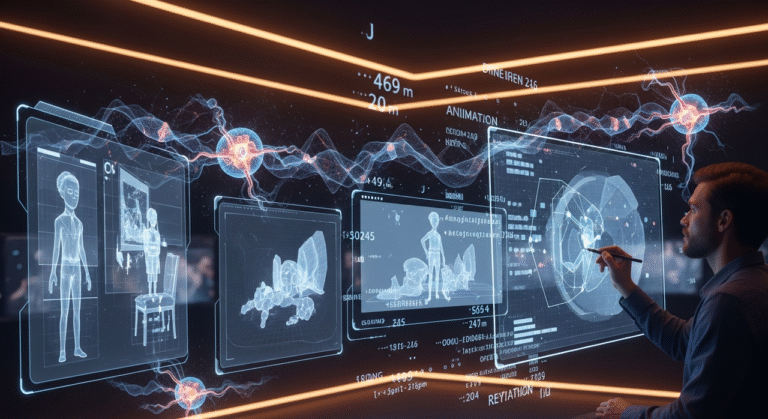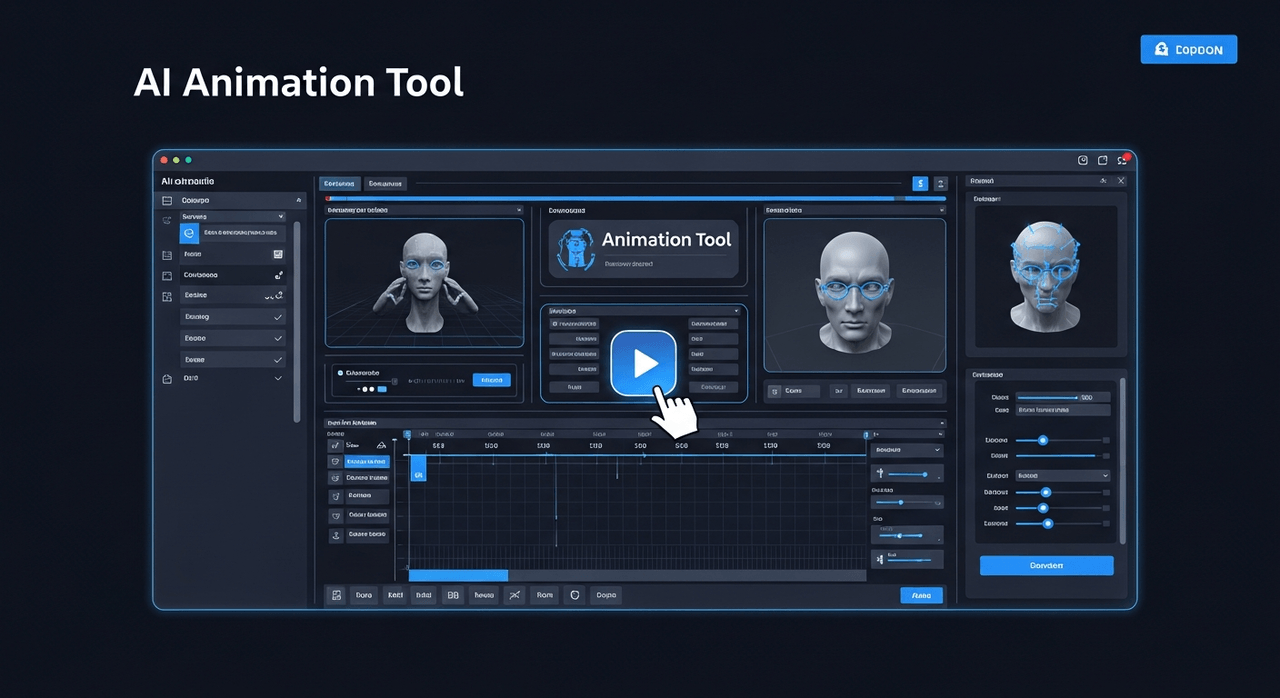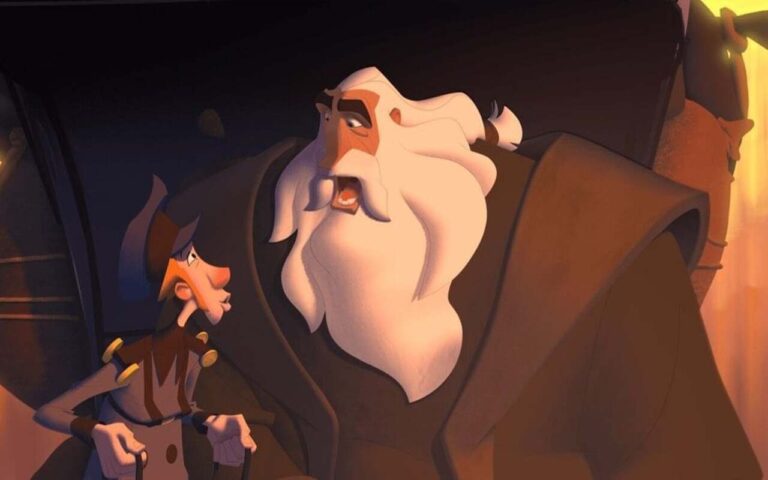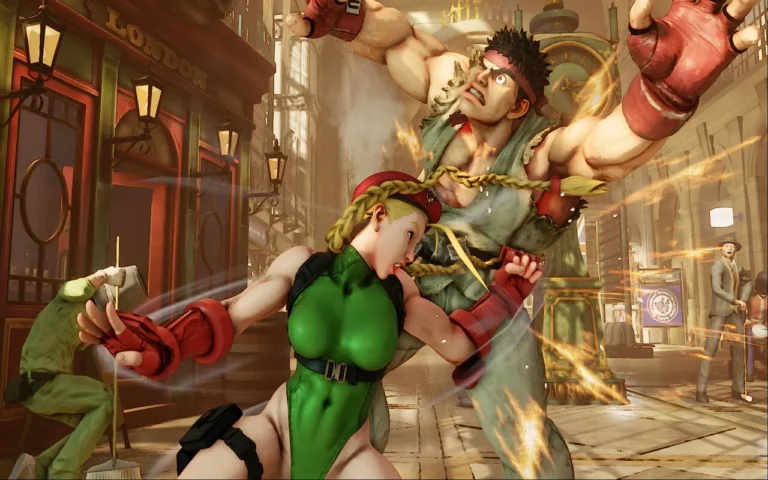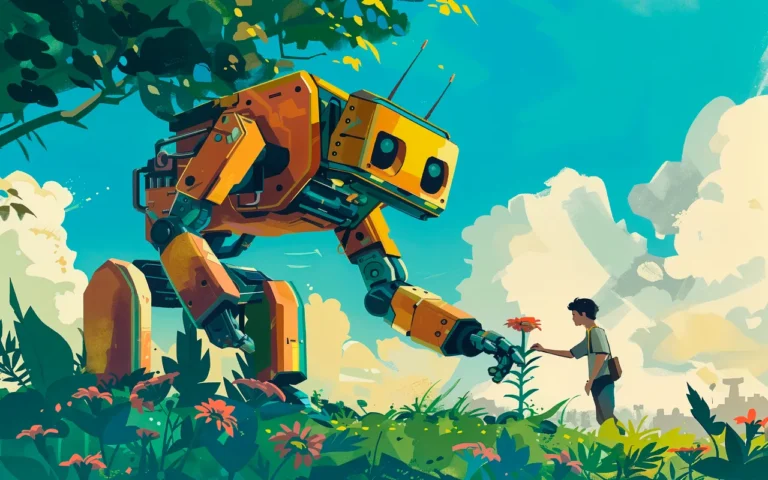It costs more to make films live in action than with animation, especially when the projects are complicated.
To give you an idea, a cartoon 2-minute video costs around $15,000 to $35,000, while a live-action 2-minute video can cost anywhere from $17,000 to more than $100,000. It’s like comparing apples and oranges when you look at the price tags.
Also, when it comes to TV shows, the numbers really speak for themselves. Animated shows like Clone Wars and Family Guy usually cost between $1 and $2 million per episode. But if stars start asking for bigger paychecks, popular live-action comedies can cost $5 million or more per episode.
Keep in mind, however, that this isn’t always the case. Living-action movies can be made for a very small price, but animated movies with lots of special effects can cost over $200 million.

Need Animation Services?
Visit our Animation Service page to see how we can help bring your ideas to life!
Why Live Action Costs More than Animation?
There are so many reasons behind it:
- Costs for location and tools are very high in live action. Just the camera gear, lights, and sound equipment can cost over $10,000 for a single day of shooting. Plus, location licenses can add another few thousand dollars to the cost.
- What matters most is the size of the crew. For live-action films, you need at least 15 to 20 people on set, but for animation services, teams can be much smaller.
- It can be very expensive to pay an actor. For example, the cost of each episode of It’s Always Sunny in Philadelphia increased from $450,000 to $1.5 million by season 15. Ultimately, each Big Bang Theory star made more than $1 million per show.
- Live-action special effects are very expensive, and it could cost between $5,000 and $20,000 to film a simple explosion safely, but the same effect can be achieved with animation as part of normal production.
- Making changes after shooting costs a lot of money. When you reshoot, you have to get the cast and crew back together and maybe even rebuild the sets. On the other hand, changes to the animation only need small edits to the voice recording and some computer adjustments.
Why Choose Animation Over Live Action?
Wondering whether to go with animation or live-action for your next project? Animation offers some serious advantages for certain types of animation storytelling and animation production pipeline. It gives you unlimited creative freedom without being chained to what’s physically possible, making it perfect for wild concepts or ideas that would be impossible (or crazy expensive) to film in real life.
8 Reasons to Pick Animation:
- Creative Freedom: Animation lets you create absolutely anything you can imagine. Your characters can fly, worlds can defy physics, and you’re never limited by what’s actually possible in reality.
- Concept Visualization: Complex or abstract animation ideas become crystal clear through animation. Technical processes that would bore people to tears in live-action can actually keep viewers glued to their screens when animated well.
- Budget-Friendly Effects: Creating spectacular special effects often costs pennies on the dollar in animation. That explosion that would cost $20,000+ to film safely in real life? It’s just part of the regular animation workflow.
- Total Control: Animation gives you complete control over every visual element – lighting, weather, visual consistency. There are no nasty surprises or elements beyond your control.
- Stands the Test of Time: Animated content typically ages much better than live-action, which can look dated almost overnight. Classic animated films still feel fresh decades after release.
- Brand Consistency: Need perfect visual alignment with your brand guidelines? Animation delivers exactly that. Your colours, character designs, and overall style stay consistent across all materials.
- No Logistical Nightmares: Forget about location permits, weather delays, travel arrangements, and other production headaches. Animation eliminates these unpredictable variables entirely.

Animation vs. Live-Action: The Ultimate Showdown
Each one has its own strengths and weaknesses that producers need to know about.
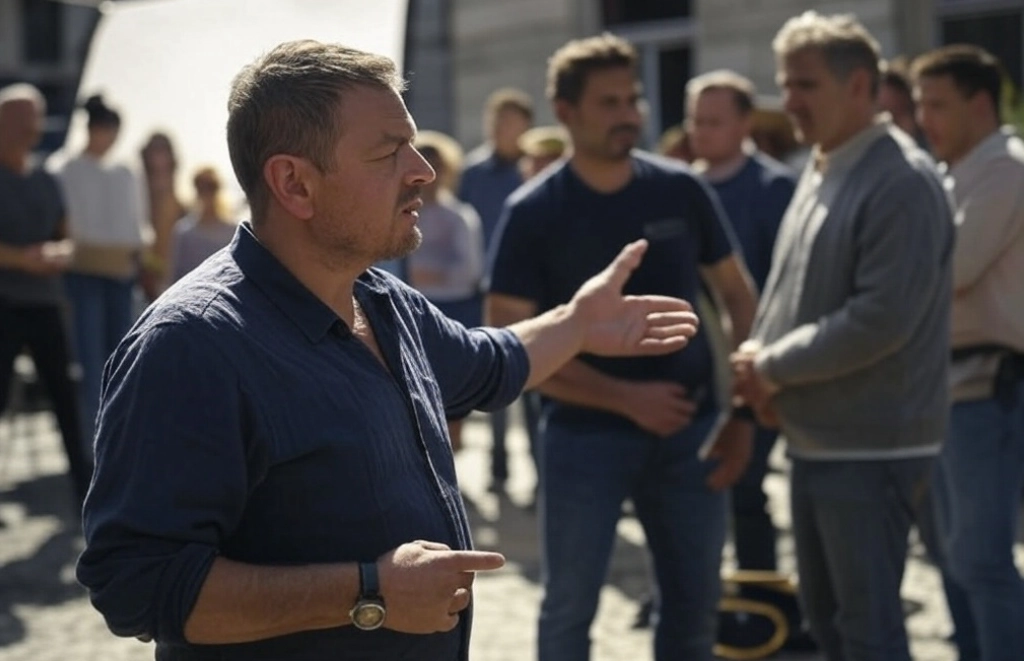
How It All Comes Together
- Animation: First, creative people come up with ideas for the whole story during planning meetings. The next step is to make a plot, create figures out of thin air, and draw frame after frame. Before anyone picks up a pencil (or hits a mouse), they have to plan out every little thing. It’s like putting together a house of cards: one mistake, and you might have to start over!
- Live-Action: Live-action projects start with writing the story, scouting for the best places to shoot, hiring real actors, and making real sets. All the time, production teams are putting out fires by making sure all the paperwork is in order.
How Long It Takes
- Animation: It definitely isn’t an overnight hit! Short videos take 3 to 7 weeks to make, but big-budget movies can take years to make. What about those great Pixar movies? An artist will work on each and every element for more than four years to finish one. Toy Story and Rome weren’t built in a day!
- Live-Action: The shooting for live-action movies can be over pretty quickly, sometimes in just a few days or weeks. Be careful not to fall for it! It takes weeks of planning before the cameras start rolling, and it needs a lot of editing to get the final product. Although an ad may only take a day or two to shoot, there is a lot of work to do before and after.
Who's Doing the Work
- Animation: Art directors, storyboard artists, concept artists, lead animators, voice players, and sound wizards are all part of the animation. The teams are smaller, but they work together for a long time—sometimes years—on a single project.
- Live Action: In live-action movies, you need a small army on set! The players, directors, camera operators, sound engineers, makeup artists, outfit designers, set builders, helpers running around like chickens without heads, and so on. Every day, even small film sets need at least 15 to 20 people to do their part.
What It Costs
- Animation: Short two-minute animations usually sell for $15,000 to $35,000, but those jaw-dropping Pixar works may bring in a huge $100 million to $200 million. Depending on the types of animation, popular shows like Family Guy and The Simpsons cost between $1 and $2 million each season.
- Live-Action: Those same two-minute movies can cost anywhere from $17,000 to over $100,000. That’s a big difference! For example, the first few episodes of It’s Always Sunny cost about $450,000 each. But once a show gets going, it can go up to $5 million or more per episode. And what about those big summer movies? They can cost between $200 million and $400 million, which is a lot of money.
Read More: How Much Does a 2D Animation Cost?
Read More: How Much Does a 3D Animation Cost?
Where It All Goes
- Animation: A lot of the budget goes to hiring skilled animators and artists, as well as buying fancy software rights and fast computers for drawing. When compared to on-camera stars, voice artists usually make a lot less money and have a lot less day-to-day costs.
- Live-Action: Location rents, tools, transportation, hotels, food for teams that are hungry, insurance, permits, and bigger paychecks for actors all cost a lot of money. Also, filming days are very expensive, and costs keep going up all around.
Visual Effects Comparison
- Animation: Completely starts from scratch; each figure, tree, cloud, and blast is created and drawn as part of the normal process. Need an enormous blast or a magic spell? Not a problem! You don’t need extra expert teams or different funds for these benefits because they are built into the process from the start.
- Live-Action: It needs professional visual effects specialists and extensive post-production effort to include everything that cannot be captured in real life. Even with a $100 million budget, VFX cost could be about 20 to 30 percent of a live-action movie.
What Talent Really Costs
- Animation: Voice actors don’t make as much as on-screen stars because they record their lines in short, efficient studio meetings instead of spending weeks on set. The voice artists record everything in cosy studio rooms, even for The Simpsons, which costs about $2 million per episode. Plus, they don’t have to wear outfits or make-up or do multiple takes from different camera angles.
- Live-action: The cost of performers can go through the roof, especially for popular shows with well-known names. Over time, Big Bang Theory made more than $5 million per episode, and most of that went to paying the actors. As the show went on, each major cast member made around $1 million per episode just to be on TV.
Equipment Requirements
- Animation: When you want to do animation, you need a comfy workshop with powerful computers, professional animation tools like Maya or After Effects, and the ability to create images well. It could cost $5,000 to $10,000 plus software fees to set up a professional animation studio, but you can use it for more than one job.
- Live action requires a lot of different tools that need to be moved from one place to another. These include cameras that cost $5,000 to $50,000 or more, lighting gear that costs $1,000 to $10,000 per day to rent, sound recording gear, dollies, cranes, and a huge number of specialized tools. For just one day of shooting, even a small expert shoot can easily spend $10,000 to $30,000.
How Long They Last
- Animation: It usually looks good for decades because it’s stylised and doesn’t use specific technologies or styles that would make it look old. Classics like Snow White (1937) and The Lion King (1994) still look great and are interesting to new viewers many years after they were made.
- Live-action: Many times, it looks old-fashioned as technology, fashion, and filmmaking methods change. Some big-budget hits from 10 to 15 years ago can feel old because of things like cell phones, clothes, and special effects that don’t work as well as they do now.
What Are The Most Expensive Animated Films?
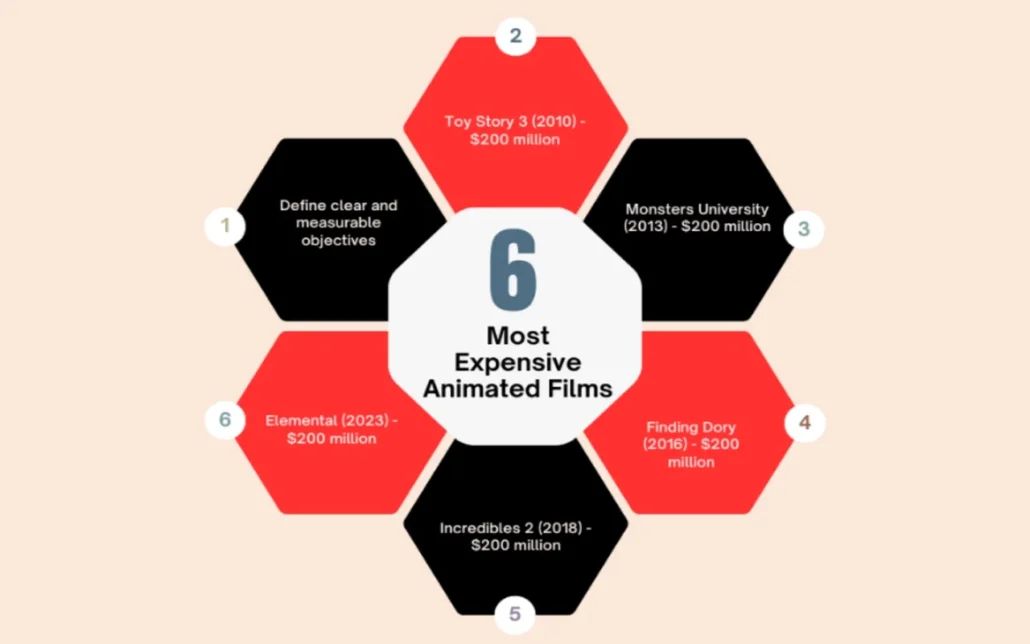
Guess what? Disney’s “Tangled” holds the crown for the priciest animated movie ever made! This 2010 film cost a whopping $260 million to create and is pretty mind-blowing when you consider it doesn’t feel as massive as other Disney epics.
The title is actually tied with the 2019 CGI remake of “The Lion King,” which also cost $260 million, though people still argue whether it’s really “animation” since it looks so realistic. Other expensive animations include:
- Toy Story 3 (2010) – $200 million: This heart-tugging finale (well, until Toy Story 4 came along) featured incredibly detailed environments, better-looking humans, and fancy new Dolby Surround 7.1 sound that made you feel like you were right there with Woody and the gang.
- Cars 2 (2011) – $200 million: This globe-trotting spy adventure zoomed through multiple countries, packed in extra racing scenes, and added tons of explosive action.
- Monsters University (2013) – $200 million: This college-days prequel needed hundreds of unique monster designs for all those background students. Plus, bringing back Billy Crystal and John Goodman probably cost a pretty penny!
- Finding Dory (2016) – $200 million: The sequel everyone had been waiting for! Creating those gorgeous underwater scenes and detailed aquarium settings wasn’t cheap. And you can bet Ellen DeGeneres didn’t come back for a small change after the first movie was such a hit.
- Incredibles 2 (2018) – $200 million: This long-awaited sequel absolutely nailed the animation of human characters; something Pixar actually tried to avoid in their earliest films!
- Elemental (2023) – $200 million: Pixar bit off almost more than they could chew with characters made of fire, water, and air! Each element created unique animation challenges that gave their technical teams serious headaches.
What's Driving the Price Tag?
Here are the reasons behind all these prices:
- Animation Style: The animation style makes a huge difference in your bottom line. 2D animation is generally cheaper at $1,000-$5,000 per minute, while 3D animation will set you back $5,000-$10,000+ per minute. Motion graphics usually fall somewhere in between.
- Design Complexity: Character-driven stories cost more than simple motion graphics. Why? Because characters need to be designed, rigged, and animated. Also, adding just one extra character can bump your costs up by 15-25%.
- Production Quality: There’s a world of difference between basic web content and broadcast-quality animation with smooth movements and detailed backgrounds. Those premium productions might spend $15,000+ per minute just on the animation work alone.
- Sound Design: Don’t forget the audio! Professional voice talent runs $250-$500 per minute; original music adds another $300-$1,000, and sound effects plus mixing will cost you $250-$750 more.
- Specialized Talent: Experienced animators don’t come cheap and they charge $50-$150 per hour. Moreover, if you’re working with award-winning studios, be prepared to fork over $200+ per hour for their expertise.
- Revisions: Most quotes include 2-3 rounds of revisions, but if you keep changing your mind, expect to pay 10-25% more.
Animation vs. Live Action: The Bottom Line
Which one should you use—animation or live-action? It depends on the goals and limitations of your project. Animation lets you be as artistic as you want and create worlds that aren’t possible. A good 2-minute animation usually costs between $15,000 and $35,000, the production process is more reliable, and there are fewer logistics problems. Live action, on the other hand, looks more real right away, but it costs more ($17,000 to $100,000 or more for similar content), needs bigger teams (15 to 20 people at least), and is harder to set up.

